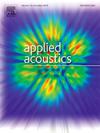Nonlinear ultrasonic technology has a potential application for evaluating material property degradation due to its high sensitivity to microstructure evolution of metal materials. Machine learning methods can effectively solve the underdetermined inversion problem in microstructure inversion due to the complicated variation of the acoustic nonlinearity. However, the limited damage information caused by few damage data samples is still the main problem that restricts the intelligent development of nonlinear ultrasonic technology. This paper proposed a generation method based on Generative Adversarial Network (GAN) utilizing prior knowledge and partial data for generating realistic nonlinear ultrasonic STFT images with varying degrees of thermal damage. The nonlinear ultrasonic STFT images measured in this work are adjusted first and then input into the proposed GAN, the prior knowledge of the fundamental frequency and second harmonic is used to guide the generation process. Multiple convolution kernels in the U-net generator slide across the STFT images with multiscale receptive fields to collectively model hierarchical representations and capture local inversion of interesting from time-frequency domain. The results indicate that the proposed method can generate realistic STFT images, the fundamental and harmonic responses extracted from the generated STFT images are similar to the values in real images, and expand the nonlinear ultrasonic datasets and effectively improve the performance of deep learning models, which has been validated in grain size prediction examples.


